The problem with flying into Cusco, Peru, with a planeload of disassembled mountain bikes is that you then have to commandeer the modest airport’s parking lot to bang those bikes back together. The chore is probably a good thing, though, to help us acclimate to the 11,000-foot altitude—and to the challenge ahead. I’m one of 16 seasoned North American riders who have traveled to this region of the Andes in southeastern Peru to log six days of rigorous descents as we explore an ancient trail system in the Sacred Valley of the Inca, with a side trip to Machu Picchu tacked on for good measure.
With all wheels and handlebars matched to corresponding frames and the bikes secured atop three vans, we shuttle through the colonial city’s twisty streets and farther up into surrounding green mountains to stage our first descent. We unload and, despite our stoke, try to pace ourselves as we pedal to an even higher starting point. Huffing on the thin air, we’re surprised to encounter a group of colorfully attired Quechuans, direct descendants of the Inca, singing and dancing along the otherwise lonely pass. They weave through our ranks, smiling and clasping our hands, then drift past. As welcoming receptions go, it’s pretty unbeatable.
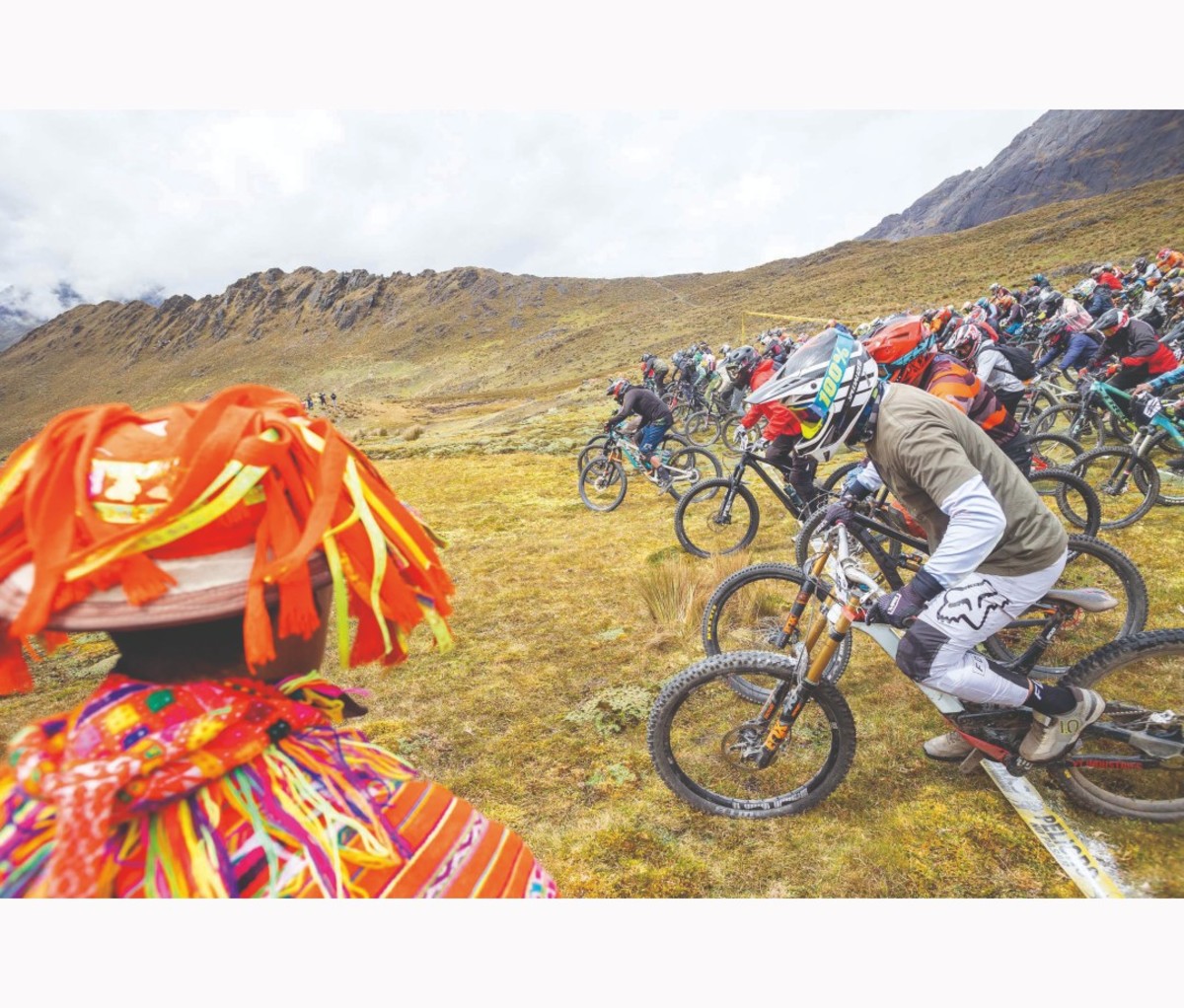
Our inaugural downhill , a llama-blazed, 9.3-mile trail known as La Maxima, is locally infamous. It starts as a track of Andean red dirt bordered by tall, yellow grass. The path is steep and fast before transitioning into rugged rock gardens and scrabbly switches that require constant vigilance to keep from washing out. After about two hours of technical maneuvering, nearing the bottom and fatigued from the long flight and the ride, I unceremoniously tumble off my seat. I slide feetfirst over loose, jagged rock that scorches my backside, praying I don’t become a speed bump for the bikes barreling down behind me. Disaster narrowly averted, I grunt off my scrapes and finish the descent. Laughing over celebratory cervezas, we assess that this “shakeout ride” was already the equivalent of several typical rides back home—and we’re set to tackle 16 more such descents in the days to come. I make a point of clinking longnecks with my friend Dillon Lemarr, manager of a riding team for bike brand Commencal, and pro freeride mountain biker Aaron Chase. This whole traveling, spoke-spinning circus has been envisioned by Chase after seven previous trips to ride the Sacred Valley. He’s dubbed it “The Inca Flow.” And right now, I’m wondering if I’ll survive it intact.
We wake early in the nearby tiny village of Ollantaytambo, site of the oldest occupied dwellings in the Americas, with stunning views of Wakaywillque, a towering glacial peak, and Pinkuylluna, a steep mountain carved with the enormous face of the Incan god Tunupa.
A second cup of thick local coffee would be nice, but cut short by orders to load up the vans shouted by Will “K.B.” Janecek, lead guide of KB Tambo Tours, an adventure-travel outfitter founded after the Minnesota salesman visited this very spot in 2002 and decided to completely change his vocation.
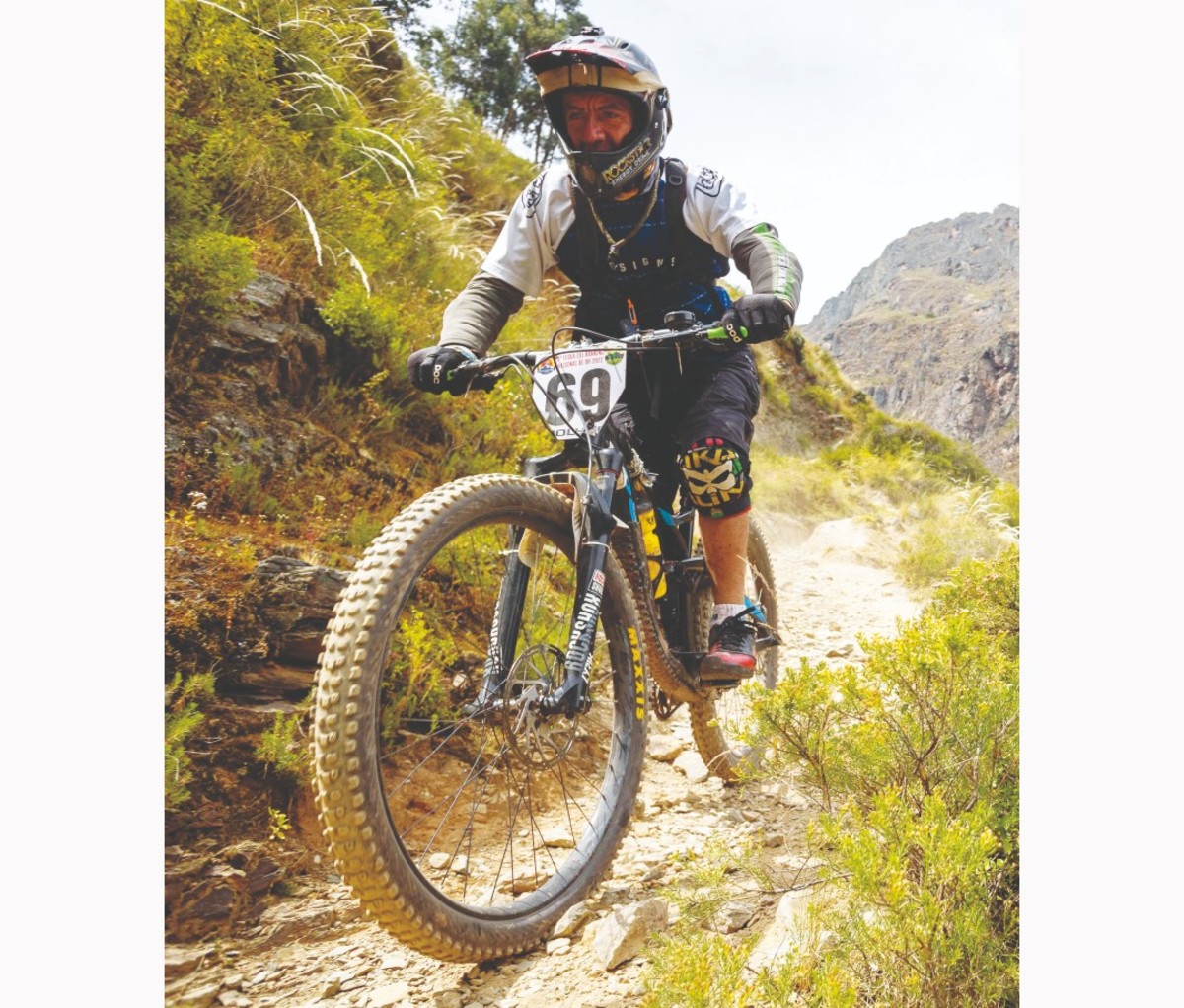
We again aim for higher elevation, our drivers executing low-gear climbs and honking around hairpin switchbacks to warn the occasional big rig appearing from the opposite direction. I avoid paying too close attention to the sheer cliffside drop-offs. Instead, I listen to a primer on how the Incas established an extensive network of trails to send messages via runners through their sprawling empire, trails further established by the sure-footed, two-toed hooves of goods-hauling llamas, which cause minimal erosion damage. These same trails have become a godsend to Peru’s burgeoning mountain-biking community.
Starting now, we plan to rack up several descents a day, including this morning’s outing on the legendary Inca Avalanche Trail. Unfortunately, after starting from a misty mountaintop and rallying through a forest, the skies darken and start to rain—heavily. Traction over slick rocks and road crossings becomes sketchy at best, stomach-flipping at worst. Still, we make the most of a rowdy, 4,700-foot descent, the trail enhanced by local bikers with showcase jumps, side hits and landings for large drops. We zoom through several distinct ecosystems, and near the bottom finally enter a relatively dry zone. We will circle back here later in the week to participate in the big, annual Inca Avalanche Race, and I get an early start on crossing my fingers for improved conditions.
After a couple more similarly intense rides, we’re starving, and basically take over a pizza joint’s ovens to keep up with our quest for calories. As becomes our custom, once plates are cleared, revelry continues with local brews and pisco until the place turns off the lights.
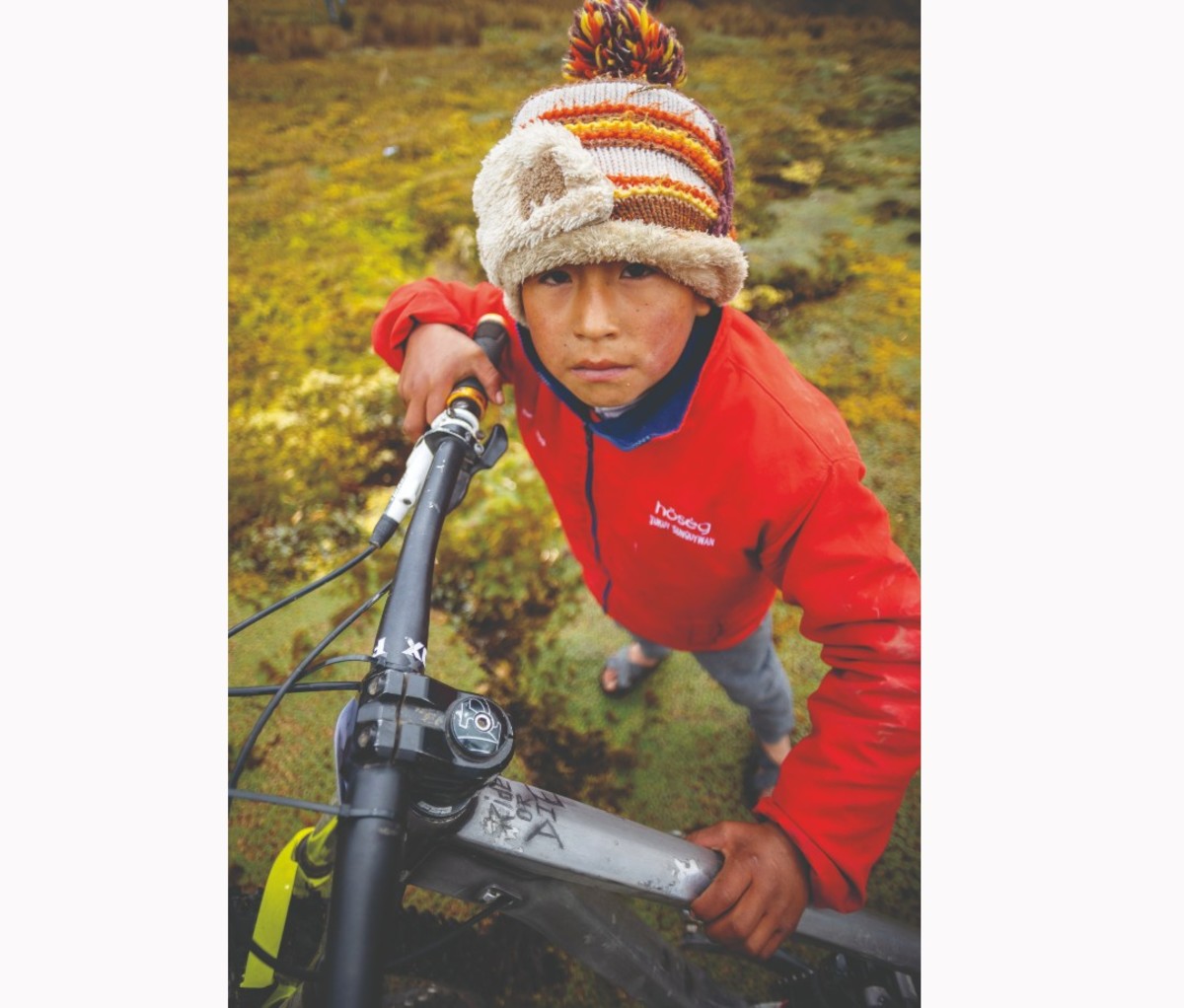
The Abra de Lares pass at 14,635 feet of elevation is a highlight. Our guide, Yannick Wende, a pro downhiller from Bolivia, explains that this Incan commerce trail is so intact that we’ll find ourselves bunny-hopping 600-year-old drainage systems. Bikes slung over shoulders, we march up a vertical slope to various drop-in-points allowing us to freeride the valley below. I watch in awe as Chase rides a rocky flank to execute an aggressive drop into an open bowl below. On the other side of the mountain’s shoulder, American pro Garret Mechem, who has added freeriding big terrain to his more known mastery of slopestyle contests, lays a fast line and carves his way down the slope, scattering buckets of dirt with each turn. We continue down on sections of S-shaped Incan stone staircases along a riverbank.
Mountain bikers work downhills much like snowboarders, pulling ollies off natural surroundings and striving to connect trail features with fluidity. (Of course, the potential bad landing is less powdery.) It’s not about being the fastest—though that certainly provides fuel for the inevitable ball-busting on return shuttle rides.
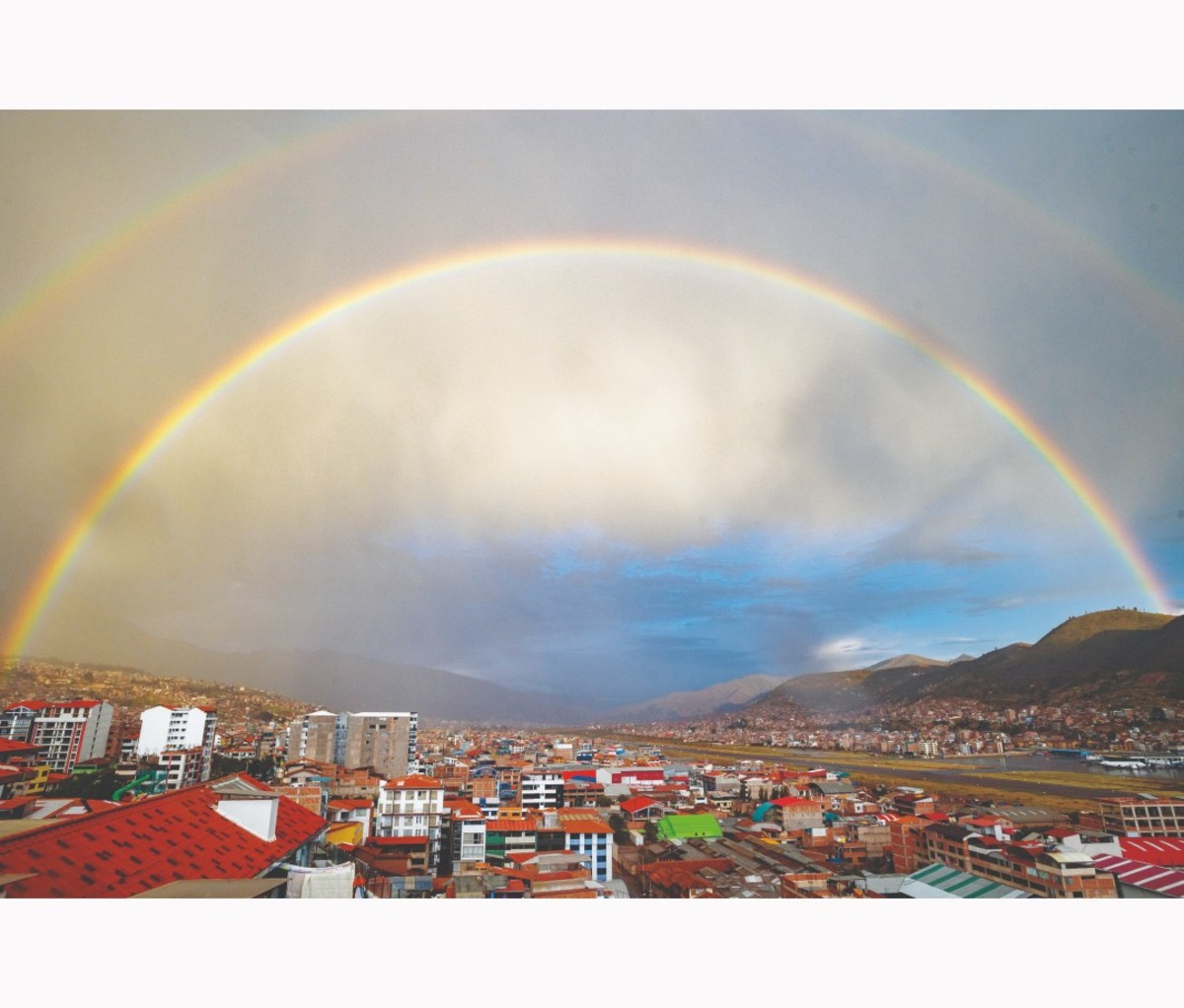
In the middle of such trails, we often come upon Quechuans tending to crops and animal herds. Several days in, we’re invited to a local barbecue. A feast of chicken, gold potatoes and green chile sauce is still being prepared when we arrive, so we jump right into a kids’ soccer match. This brings out the village’s older soccer aces, leading to a hard-played locals vs. foreign bikers match that taxes our lungs as much as any ride. Luckily, the next day’s sojourn to Machu Picchu is taken via train and bus winding for several hours through jungle canopies and along the Urubamba River before we arrive at the site’s gate.
We head directly to the base of Huayna Picchu, the site’s highest peak, and in a reverse of our usual direction on this trip, begin the 850-foot hike up its steep staircases. We’re rewarded with a ridiculously epic view overlooking Machu Picchu’s condor-shaped royal estate. Renowned for precision stone masonry, Incan architecture still connected harmoniously with the area’s topography. It’s gratifying to learn that Spanish conquistadors never stumbled upon this paradise while subduing so much of the Incan empire. On the train back to Ollantaytambo, we reflect on how much we’ve learned, and how much more time it would require to truly comprehend it all.
Rejuvenated by our Machu Picchu excursion, our next big mission is to further scout the course for the upcoming race on the Inca Avalanche Trail, identifying hazard spots and stretches to pick up pace. Sounds simple enough, but each rider must handle race speed while 200 other competitors simultaneously launch from the starting line. The battle to be near the front of the pack before bottlenecking onto single track will undoubtedly send some veering off course.
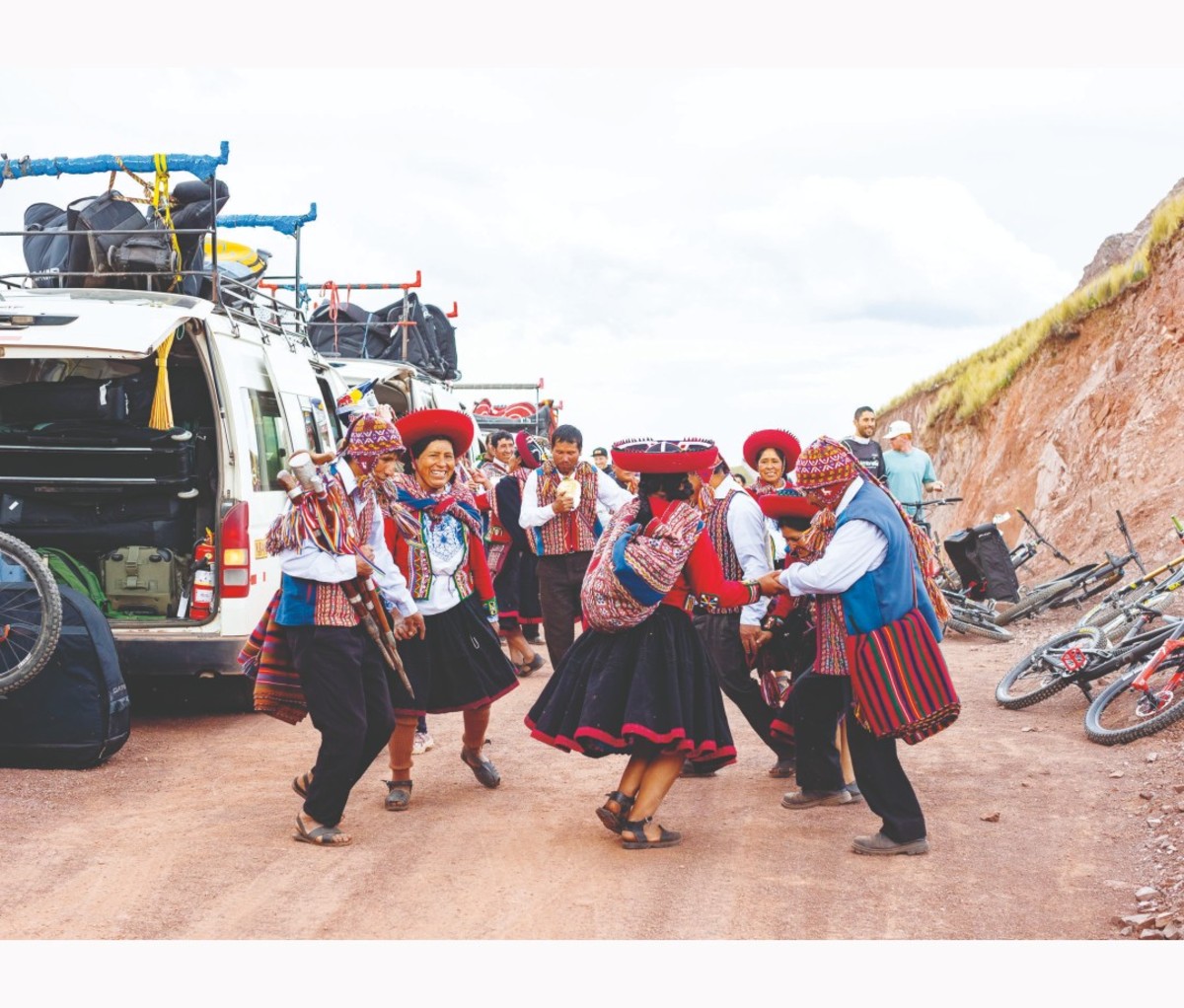
Veteran downhiller Wende has raced this event almost every year since 2007, and won it twice. He’s generous with his insights, which include that the unpredictable riding lines at the start can be slick with moss, that the trail frequently crosses sections of active highway, that the forest zone is particularly draining, and that he once had to jump over a cow to maintain his momentum. “To win,” he advises, “you must be psychologically ready because the last bit is all pedaling for max speed. You must endure and be determined to suffer more until you pass the finish line.”
Moss. Trucks. Cows. Got it. I’m somewhat reassured by the fact that despite his alarming brief, Wende will be riding next to his 9-year-old son this year. We arrive on race day to find riders fanned out along the pass. This annual event brings out much homegrown talent and a smattering of international pros. The spectrum of gear is eye-catching, including vintage-engineered bikes and brands of which you’ve never heard. No matter, what counts is the desire to ride and push—everyone vibes the intent to go hard. Racers hike up llama paths toward the start line, some letting local porters carry their bikes for a handful of coins.
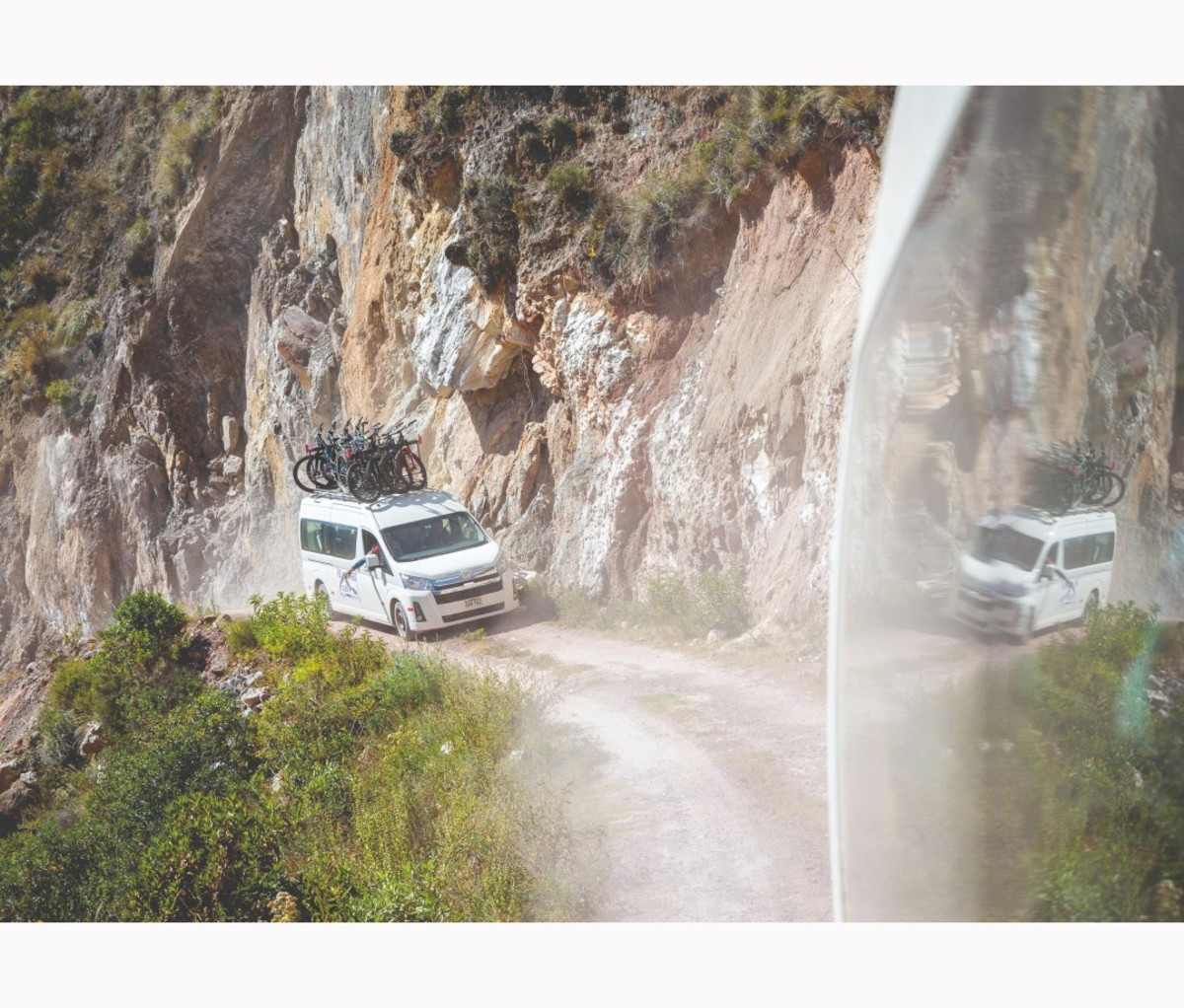
I grab a photo at the start, putting me among the last riders to drop in. But I’m familiar with this trail now, and it’s drier than earlier in the week, so within minutes I start catching up to the pack, shouting “Andale! Andale!” as I pass. Soon, I encounter a fellow tour group member helping our lead guide, K.B., hobble off the course after a hard wipeout. We deploy my radio to summon medical attention, then I continue and spot several other groups assisting riders who have blown up or experienced mechanical issues. When I catch up to a stranded local rider I briefly met at the starting line, I toss him the multitool he needs to fix his bike, but don’t stick around to get it back. Despite all the distractions, I feel confident in my speed and understanding of the terrain. When I reach the lower sections, my flagging energy gets a boost from spectators lined up to cheer us on, and I cheer right back at them. Finally, I cross the finish line, not last, and in one piece.
I wasn’t the only rider who came from behind. Kilian Bron, a Frenchman who has been riding in Peru a lot, made a sprint from the back of the pack by choice, picked off the rest of the field throughout the descent, and snagged first place, a truly impressive feat of riding. With the race over, my crew will soon need to hustle back to the hotel to pack and prepare to disassemble our bikes for our return flight. At the moment, though, two kids are jockeying to wash the dust off my bike, and I hire them both to share the task. While they get to it, I lose myself in the milling crowd, lean in to hear everyone’s stories, and try to figure out a way to make all this happen again.
from Men's Journal https://ift.tt/JBus8GO






No comments:
Post a Comment